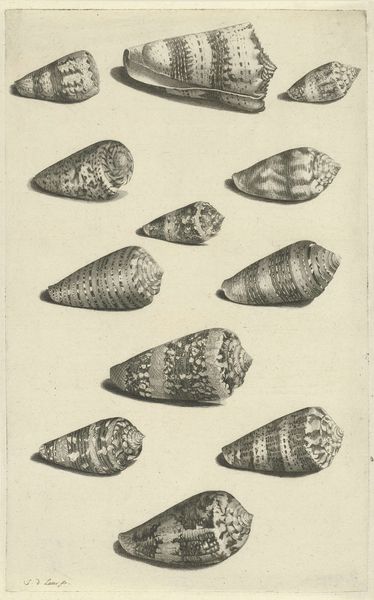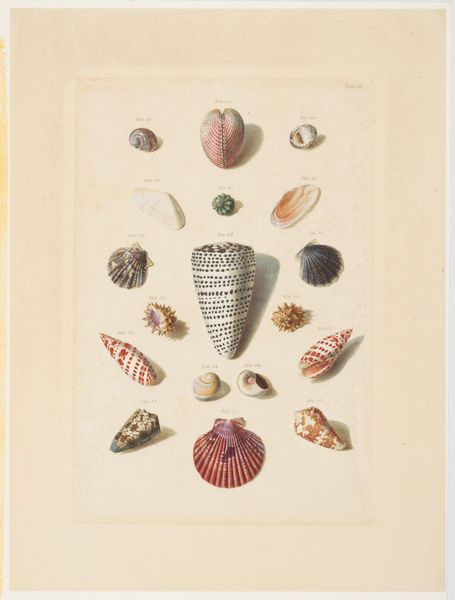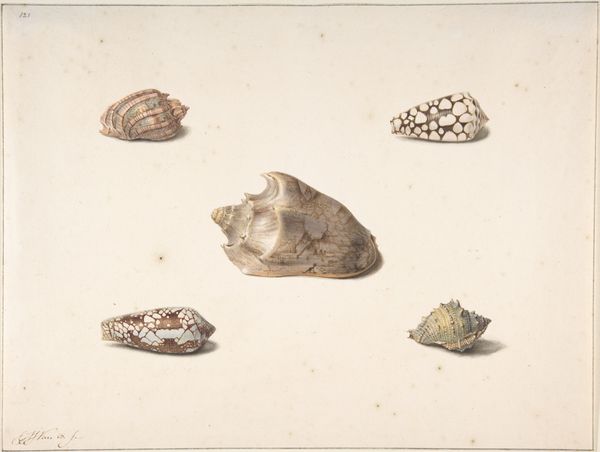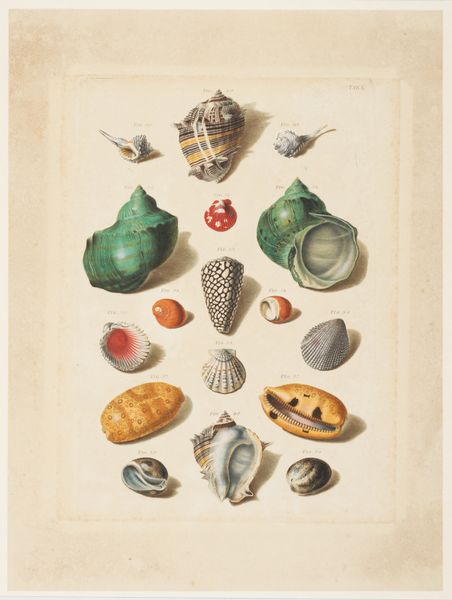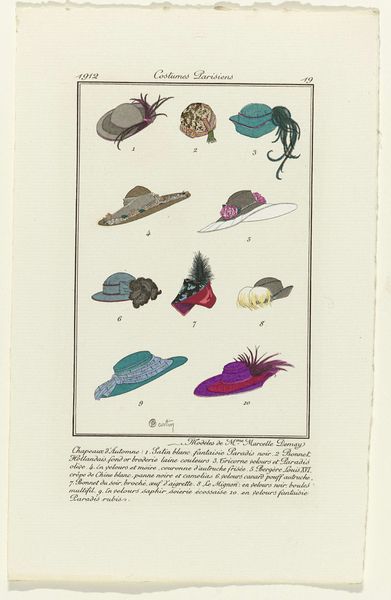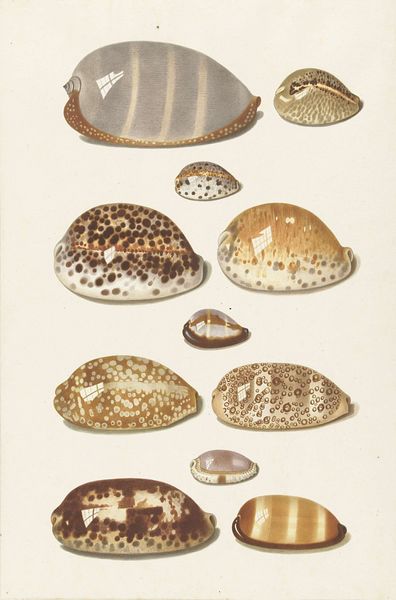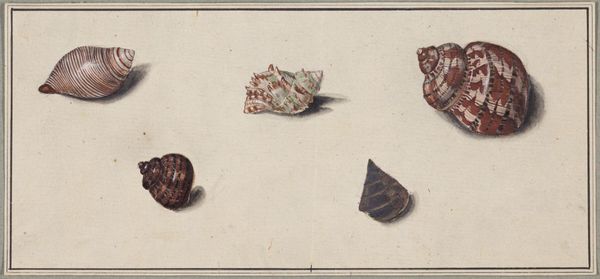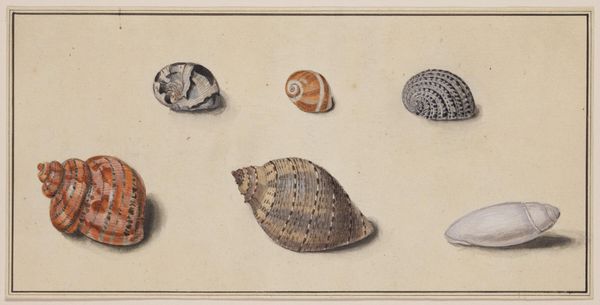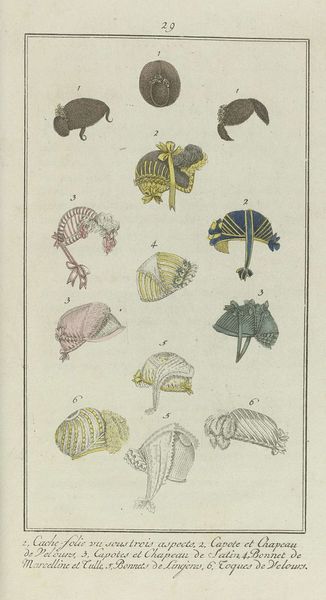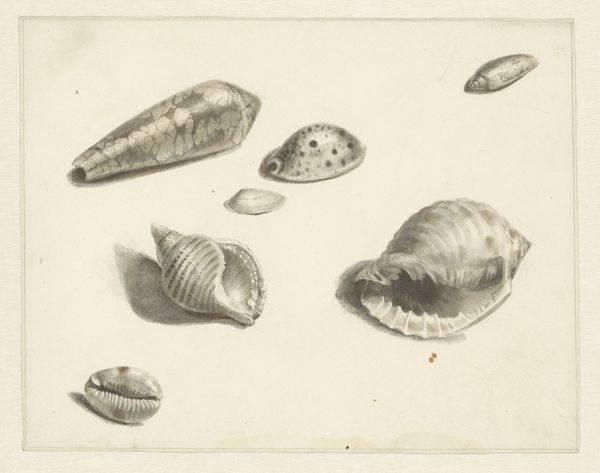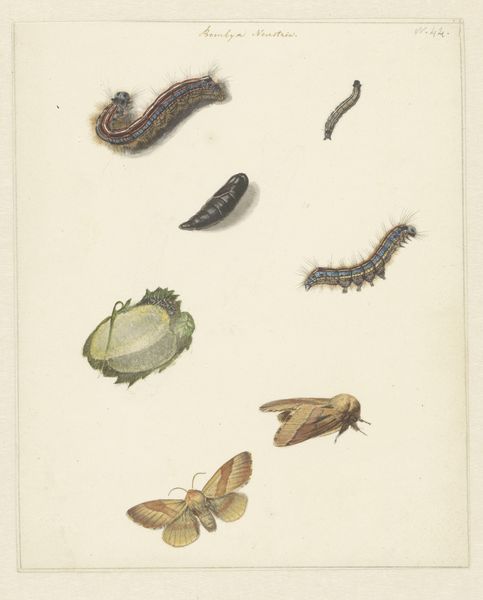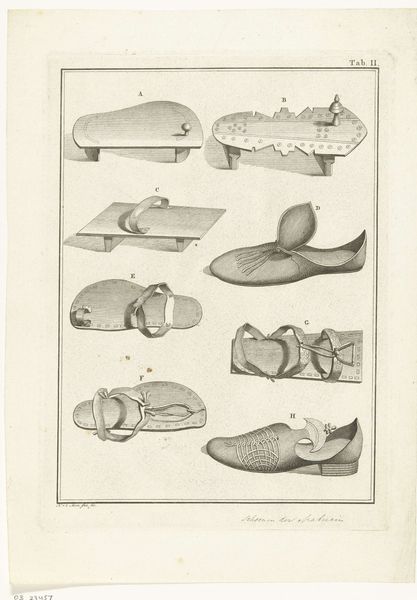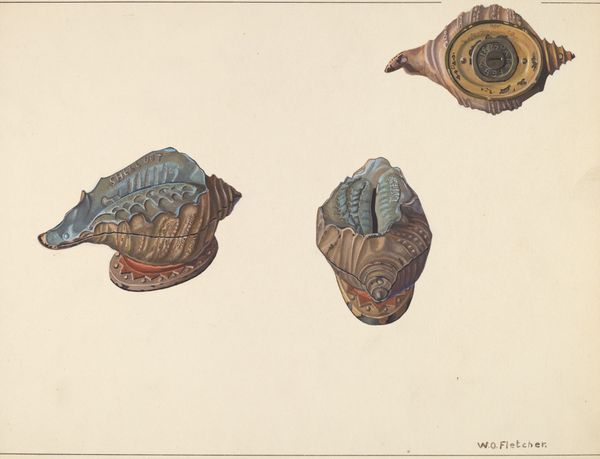
#
aged paper
#
toned paper
#
light pencil work
#
yellowing background
#
coloured pencil
#
watercolour bleed
#
watercolour illustration
#
green and neutral
#
watercolor
#
warm toned green
Dimensions: height 397 mm, width 272 mm
Copyright: Rijks Museum: Open Domain
Curator: Here we have Johann Gustav Hoch’s "Twenty Tropical Shells," dating sometime between 1726 and 1779. He renders each shell with delicate detail using watercolor and colored pencil on paper. Editor: Immediately, the arrangement feels almost scientific, a presentation of specimens. There's something both meticulous and… reserved about the composition. What story can it tell us? Curator: I think that's perceptive. It mirrors the rise of scientific illustration during that period, linked to colonial exploration and the desire to categorize and possess the natural world. The shells become trophies, of sorts, meticulously captured for study and display back in Europe. Consider the social context of acquiring these objects. Who benefited, and at what cost? Editor: Indeed, there’s a definite sense of removing these objects from their ecosystem. The neutral, yellowing background almost flattens them, deprives them of any environmental context. I'm interested in the implied power dynamics at play here—the act of collecting, classifying, and exhibiting as a demonstration of authority. Curator: Precisely! And that ties into the art market of the time, the patronage networks that supported artists like Hoch. These works weren’t just aesthetic objects; they were commodities, reinforcing class and colonial structures. These illustrations made faraway wonders accessible to wealthy patrons. Editor: It raises some ethical questions about our viewing these images today, divorced from the immediate realities of how they came into existence. But isn’t there a beauty in Hoch's careful study and recreation of natural objects? Curator: Of course. But recognizing that beauty shouldn't eclipse our critical understanding of the art's cultural implications. Can we celebrate artistry while critiquing the socio-political context it was created within? I think that's where we find the real learning opportunity. Editor: A challenging prospect, perhaps, but a vital one nonetheless! Understanding these pieces of history may shed a light on the impact and influence art has on culture and society. Curator: I agree! Examining art through both aesthetic and ethical lenses is where true understanding takes root.
Comments
No comments
Be the first to comment and join the conversation on the ultimate creative platform.

